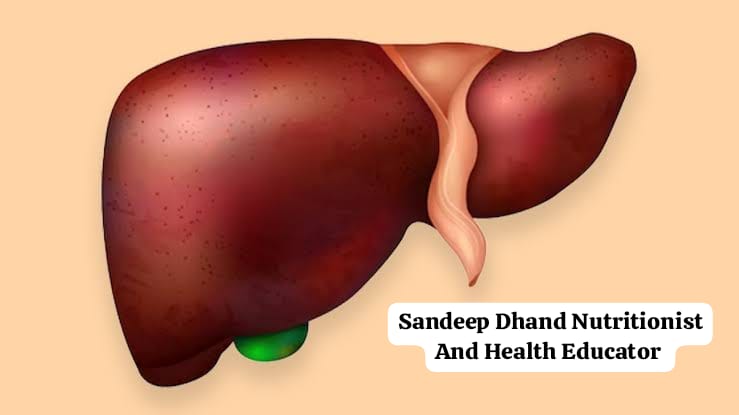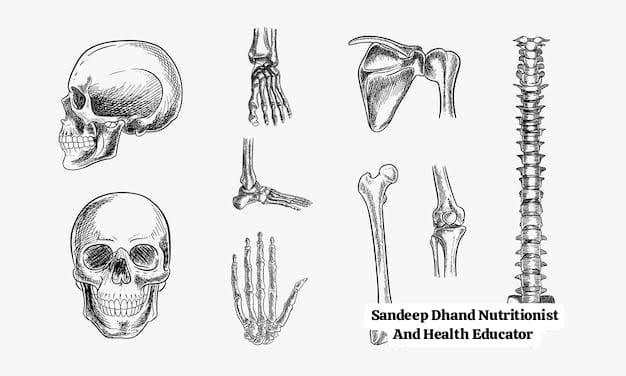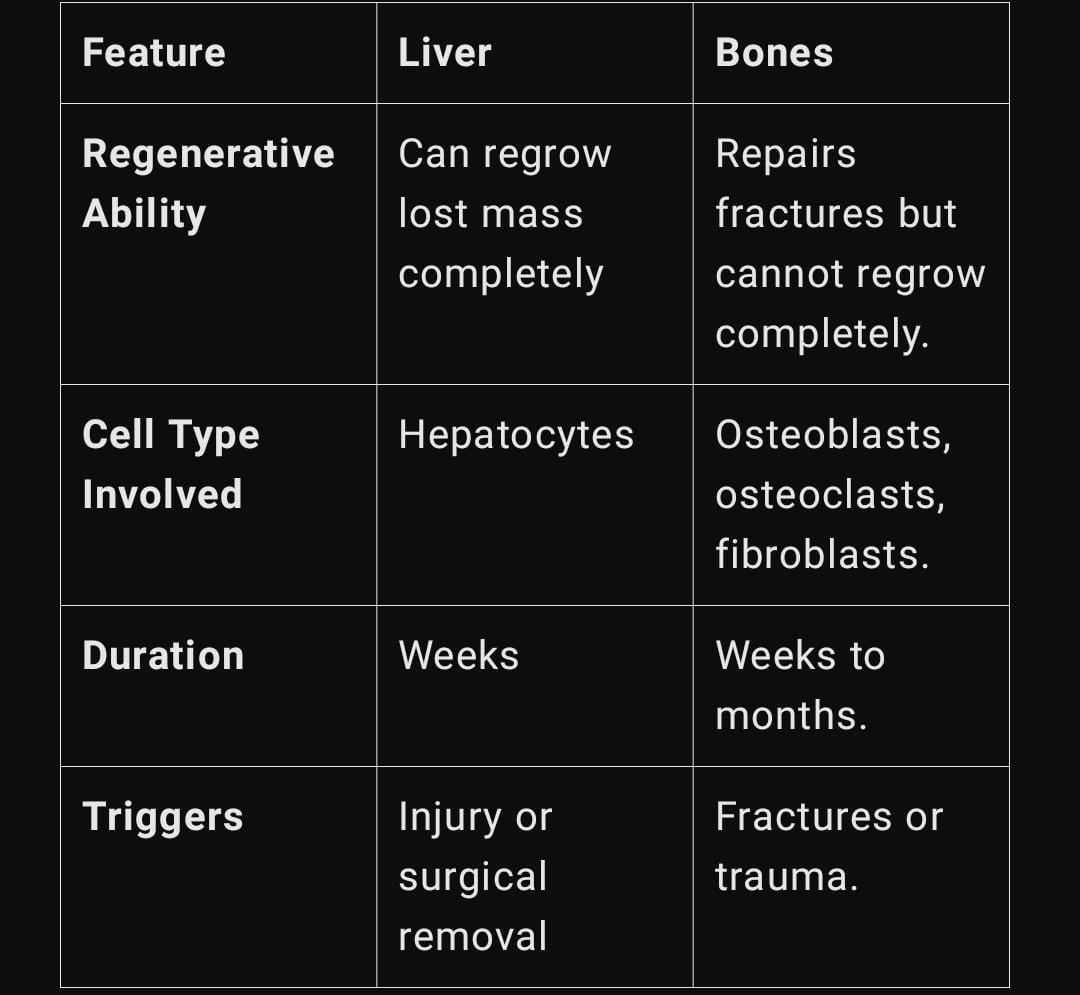Sandeep Dhand
Nutritionist And Health Educator
The human body is a marvel of biological engineering, capable of repairing itself in incredible ways. Among its many fascinating abilities, the regeneration of the liver and bones stands out as a testament to its resilience. This article explores the unique processes through which the liver and bones heal and regenerate, providing insights into the science behind these mechanisms.
Understanding Regeneration in the Human Body
Regeneration refers to the process by which cells, tissues, or organs repair themselves or regrow after injury or damage. While some body parts, like the skin, regenerate quickly, others, such as the liver and bones, follow more complex processes. These systems demonstrate the body’s innate capacity to adapt, survive, and recover.
The Liver: Nature’s Miracle Organ
The liver, located in the upper right part of the abdomen, is one of the largest and most vital organs in the body. It performs essential functions such as detoxification, nutrient processing, and bile production. What makes the liver truly extraordinary is its ability to regenerate, even after significant damage.
How the Liver Regenerates

The liver’s regenerative ability is unique among human organs. Unlike most tissues that rely solely on the creation of new cells, the liver’s existing cells divide and grow to restore lost mass. Here’s how the process works:
- Cell Division:
When the liver is damaged or partially removed (e.g., during surgery or donation), the remaining liver cells, called hepatocytes, begin to divide rapidly. These cells proliferate to replace the lost tissue. - Growth Factors:
Special proteins known as growth factors, such as hepatocyte growth factor (HGF) and epidermal growth factor (EGF), stimulate cell division and regeneration. These factors are released by surrounding tissues and blood to signal the liver to repair itself. - Regeneration Speed:
The liver can regenerate up to 70% of its original mass within weeks, depending on the extent of damage and the person’s overall health. - Returning to Normal Size:
Interestingly, the liver does not overgrow. Once it has restored its original mass, it stops regenerating. This regulation is controlled by intricate feedback mechanisms in the body.
What Impacts Liver Regeneration?
Several factors can influence how effectively the liver regenerates:
Age: Younger individuals tend to regenerate liver tissue more efficiently.
Health: A healthy diet and absence of chronic diseases (like liver cirrhosis or hepatitis) enhance the liver’s ability to recover.
Alcohol and Toxins: Excessive alcohol consumption or exposure to toxins can slow down or impair regeneration.
Bones: The Framework of the Body

Bones are the rigid structures that provide support, protect vital organs, and enable movement. Unlike the liver, bones cannot regenerate in their entirety, but they possess an incredible ability to heal and repair fractures.
How Bones Heal and Regenerate
Bone healing is a natural process that involves multiple stages. When a bone breaks, the body immediately begins a series of steps to repair the damage:
- Inflammation Phase:
After a fracture, blood vessels in the area break, leading to bleeding and the formation of a clot, called a hematoma.
This clot stabilizes the broken bone and attracts cells like macrophages and platelets to clean up debris and release growth factors.
- Soft Callus Formation:
Within a few days, specialized cells called fibroblasts and chondroblasts create a soft callus (cartilage and connective tissue) around the fracture.
This soft callus acts as a temporary bridge to hold the bone ends together.
- Hard Callus Formation:
Over the next few weeks, the soft callus is replaced by a hard callus made of immature bone (woven bone).
This is facilitated by bone-forming cells called osteoblasts, which deposit minerals like calcium and phosphate.
- Bone Remodeling:
The final stage involves reshaping the hard callus into mature bone.
Osteoclasts (cells that break down bone) and osteoblasts work together to restore the bone’s original shape, strength, and structure.
How Long Does Bone Healing Take?
The duration of bone healing depends on factors like the severity of the fracture, age, and overall health. Generally:
Minor fractures: 6-8 weeks to heal.
Severe fractures: Several months, especially if surgery is required.
Children: Heal faster due to their higher metabolic rate and active growth plates.
Factors Affecting Bone Regeneration
Several factors can influence the bone healing process:
Nutrition: Adequate intake of calcium, vitamin D, and protein is crucial for bone repair.
Exercise: Weight-bearing activities stimulate bone formation and strength.
Smoking and Alcohol: Both negatively impact blood flow and cell activity, slowing the healing process.
Key Differences Between Liver and Bone Regeneration.

Enhancing Regeneration Naturally
To support liver and bone regeneration, consider adopting these healthy habits:
- Balanced Diet:
Include foods rich in antioxidants, vitamins (A, C, D), and minerals (calcium, magnesium, zinc).
Limit alcohol and processed foods.
- Regular Exercise:
Weight-bearing exercises like walking, jogging, or yoga improve bone density and strength.
- Stay Hydrated:
Proper hydration supports cellular repair and nutrient transport.
- Avoid Smoking and Excessive Alcohol:
These habits impair both liver and bone healing.
Conclusion
The liver and bones are two extraordinary examples of the human body’s ability to heal and adapt. While the liver can regenerate its lost mass, bones rebuild themselves through a structured healing process. Understanding these mechanisms not only highlights the complexity of our bodies but also emphasizes the importance of maintaining a healthy lifestyle to support natural regeneration.
By prioritizing good nutrition, exercise, and avoiding harmful substances, we can maximize the potential of these regenerative processes and ensure long-term health.